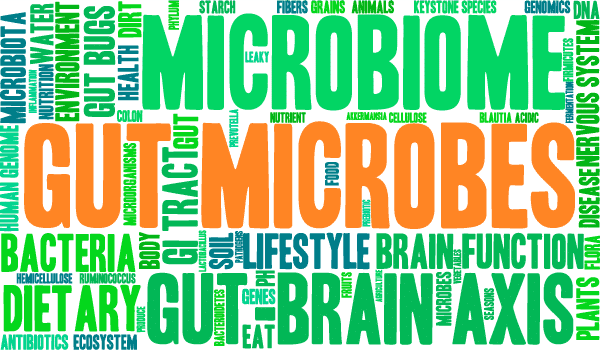Addressing the Fiber Gap Can Improve Gut Microbiome Diversity
In a new article from the University of Alberta, titled “The Fiber Gap and the Disappearing Gut Microbiome: Implications for Human Nutrition,” authors provide an overview of the evidence regarding dietary fibers and the microbiome. The article, which was published in Trends in Endocrinology and Metabolism, reviews data which suggests low fiber diets may reduce both the diversity of microbial species in the microbiome and the subsequent production of fermentation end products including short chain fatty acids. Additionally, this data suggests that dietary carbohydrates that become available to the microbes, which colonize the intestine, termed microbiota-accessible carbohydrates (MACs), are important determinants for microbiome diversity and function.
The article provides a list of available dietary fibers and includes product names and potential food products which may contain added fibers. Further, the article states, “The depletion of the gut microbiome might well be one of the 21st-century challenges to modern society as it is likely to contribute to growing disease pandemics, with clear implications for public health, clinical practices, and human nutrition. We argue here that we already have avenues available to enrich the food supply with dietary fiber in an attempt to restore composition and function of the gut microbiome. However, their successful implementation will require a society-wide effort and essentially a transformation of human nutrition away from a discipline that focuses merely on meeting the nutritional needs of the human host to one that is concerned with also nourishing the symbiotic microbial communities that are so essential in health.”
As mentioned in the 2015 Dietary Guidelines for Americans, dietary fiber is a nutrient of public health concern due to underconsumption by American adults and as low intake is associated with poor health outcomes. Healthcare professionals should, therefore, consider foods with added fibers to help improve fiber intake among their patients and clients. Further, patients and clients could benefit from understanding how to identify dietary fiber content on the Nutrition Facts panel for foods as well as fiber content of various fruits and vegetables and how to address concerns related to tolerance. The variety of foods with added dietary fibers, as described in the article, show fiber can often be found in foods not traditionally mentioned as sources of this important nutrient.
For more information regarding specific fibers, click here.




